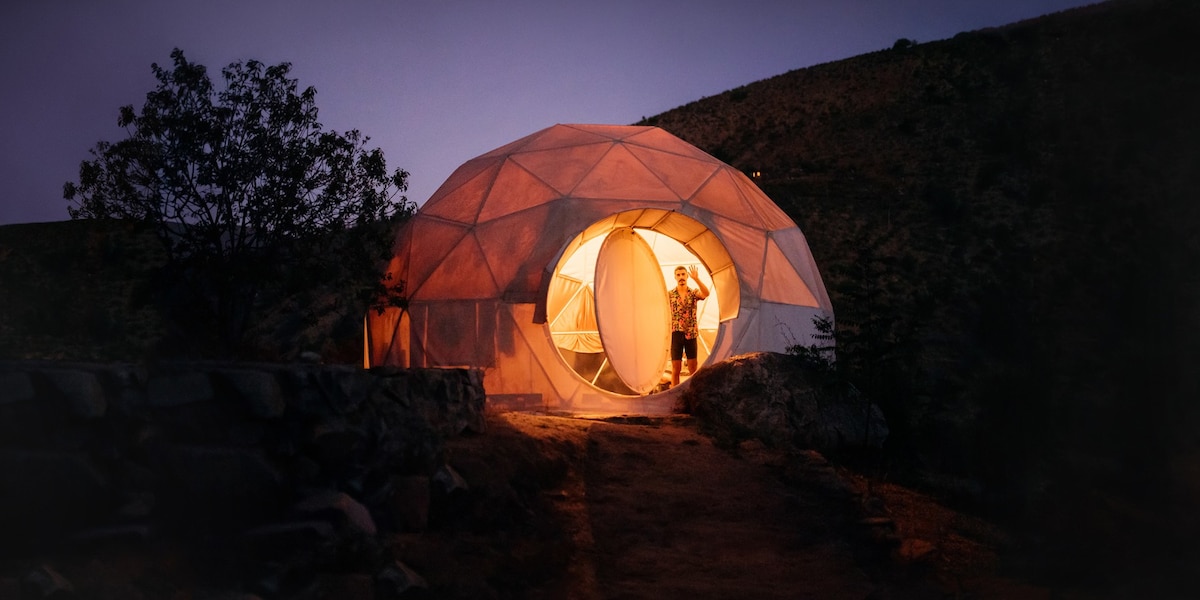Mauritius Made Affordable

About Mauritius
Mauritius, a tiny island in the Indian Ocean, is an underrated gem that’s just waiting to be explored—especially if you’re on a budget. Whether you’re looking to kick back on some pristine beaches, dive into epic hiking trails, or experience the island’s lively culture, Mauritius has got you covered. Here's everything you need to know before you go:
Where is Mauritius?
Mauritius is a small tropical island located about 2,000 kilometers (1,200 miles) off the southeast coast of Africa, nestled in the southwestern Indian Ocean. Despite its small size, it boasts a diverse landscape of beaches, mountains, lush sugarcane fields, and vibrant cultural hubs.
The island spans an area of 2,040 square kilometers (788 square miles). From the north (Cap Malheureux) to the south (Souillac), it’s about 65 kilometers (40 miles), while from the east coast (Belle Mare) to the west coast (Flic-en-Flac), it measures roughly 45 kilometers (28 miles). Its compact size makes it easy to travel around, with most destinations accessible within 1–2 hours by car or public transport.
Languages Spoken
While English is the official language (great for communication with the government and all the legal stuff), most people speak Creole, which is a mix of French and African influences. French is also widely spoken, especially in cities and tourist spots. So don’t worry about language barriers—most locals will be able to understand you in English or French!
Driving
If you're planning to rent a car, heads up: we drive on the left side of the road, just like in the UK. It’s not a huge deal if you’ve driven in a country with the same rules, but if not, take it slow.
Weather and Seasons
Mauritius has that perfect, tropical climate you’re dreaming of. It’s sunny and warm almost all year round: Summer (November to April): Expect hot, humid days and occasional rain. If you're coming during these months, pack light clothes and maybe a raincoat just in case. Winter (May to October): Cooler and dry—this is probably the best time for outdoor activities like hiking and checking out the local sights.
Currency
The currency here is the Mauritian Rupee (MUR). You can easily exchange money at the airport or in most towns. ATMs are everywhere, and credit cards are widely accepted at hotels, shops, and restaurants, so no need to worry too much about cash if you’re in a touristy area.
Conclusion
Travel and Transport
Taxis
Taxis are a convenient mode of transport in Mauritius but come with a higher price tag compared to alternatives like buses or scooters. They are widely available in towns, tourist hotspots, and near hotels, so finding one during the day is generally not an issue. However, availability decreases significantly at night, particularly in less populated areas.
For a more economical option during the day, buses and scooters might be a better fit. At night, if you need a taxi, plan ahead to ensure availability.
Buses
If you’re looking for an affordable way to get around, buses are your best bet. A single ride usually costs around 1 euro, which is super cheap! The bus system is extensive, covering most of the island, so it’s great for getting from town to town. Keep in mind that someone will come around to collect the fare—so just sit back, relax, and wait for them to come to you. The buses can get crowded, but they’re a reliable and wallet-friendly way to explore. Just make sure you’re okay with a bit of a squeeze during rush hours.
Scooters Rental
Cars
If you’re in need of a bit more space or planning to go further afield, you can rent a car. However, cars can get pretty expensive—so unless you’re sharing with a few people to split the cost, it’s not the most budget-friendly option. Keep in mind that driving is on the left side of the road, and traffic can be a bit chaotic in the bigger towns, so renting a car might not always be the most relaxing experience
Final Thoughts
In short, buses are your go-to if you’re trying to keep costs low. But if you want more flexibility and a bit of adventure, renting a scooter is a solid choice. Either way, getting around Mauritius is pretty straightforward, and with these affordable options, you’ll be able to see everything the island has to offer without breaking the bank!
Accommodation
Mauritius offers a variety of accommodation options to suit different budgets and preferences, but options for backpackers are somewhat limited compared to other destinations. Here’s a breakdown of your options:
1. Couchsurfing
2. Airbnb & Booking.com
Airbnb and Booking.com will cost you more, with rooms on a host basis typically ranging from 20 to 30 EUR per night, depending on the location and booking conditions. These platforms offer more privacy and comfort than Couchsurfing, and while they come with a price tag, they also provide the convenience of having your own space and often additional amenities. It's worth noting that booking in advance can help you find good deals and more budget-friendly options.
3. Camping/Tents
If you’re embracing the backpacker lifestyle and love getting close to nature, bringing a tent is an excellent option. Mauritius offers beautiful beaches, national parks, and hiking spots where you can camp, though keep in mind that there are some restrictions in certain natural parks. While there aren't designated campsites, you can often camp in most areas, especially by the beach. Public toilets at some beaches are available for use, providing basic facilities. This is one of the most affordable and immersive ways to experience the island's natural beauty while sticking to a tight budget. Just make sure to check local regulations before setting up camp! In the next section, I'll provide you with some tips and recommended places to camp and enjoy the best of Mauritius on a backpacker’s budget.
4. No Hostels
In Mauritius, there are no hostels at all, so you won’t find the typical backpacker accommodation options commonly available in other destinations. This can make it a bit trickier for budget travelers seeking the classic hostel vibe. However, you can still enjoy affordable stays by using Couchsurfing, where you can stay with locals for free and meet other travelers.
Another budget-friendly alternative is renting a room through platforms like Airbnb, where you can find private rooms in local homes, often for reasonable prices. If you're traveling solo and looking for a social experience, Couchsurfing is definitely the best option. It’s a great way to stay for free, meet locals, and immerse yourself in the Mauritian culture!
Food & Drinks
Food
Mauritian cuisine is a delightful fusion of various global influences, offering a wide range of flavors, from savory to spicy, that will satisfy every palate. Whether you're on a budget or seeking something unique, there's something for everyone. Here's a look at some must-try dishes:
Dholl Puri is a local favorite, consisting of flatbread stuffed with yellow split peas, served with chutneys and curry. It's a filling, flavorful dish, ideal for a quick meal. Price: Around 0.5 EUR. Chilli Level: Mild, but you can add chili for a spicy kick.
Gato Pima are deep-fried split pea fritters, crispy on the outside and soft inside. A great snack for on-the-go. Price: About 1 EUR for a few pieces. Chilli Level: Usually mild, but some versions are spicier.
Mine Bouilli Boulets is a noodle soup with meatballs, perfect for those craving something hearty. Price: Around 3 EUR. Chilli Level: Mild, but chili is served on the side for those who want it hotter.
Samosas, crunchy and deep-fried, are stuffed with spiced potatoes, peas, or minced meat. A popular snack, especially at street stalls. Price: Around 20–50 MUR each. Chilli Level: Generally mild, but chili sauce is often served on the side.
If you're looking for something on the cheaper side, local snacks are a great choice. You can enjoy a satisfying meal for as little as 3 EUR per meal, making Mauritius an affordable destination for food lovers on a budget. Whether you're looking for something mild or spicy, there's always a flavorful option waiting for you!
You'll also find a fantastic mix of international cuisine, especially around the more tourist-heavy areas. Whether you're craving Japanese, Italian, French, Chinese, or Indian food, there are plenty of options available to suit your tastes. From fine dining restaurants to more casual spots, the variety is vast, and the quality is generally excellent. Popular areas like Grand Baie, Flic en Flac, and Tamarin have a large selection of international eateries where you can enjoy everything from sushi to pasta and curry dishes.
Drinks
When it comes to drinks in Mauritius, you're in luck as the island provides a variety of affordable and accessible options. Tap water is generally safe to drink, so you don't need to worry about buying bottled water all the time. However, if you're more comfortable with bottled water, expect to pay around 20 MUR for a 1.5L bottle, which is relatively cheap.
For those who enjoy a cold beverage, beer is quite affordable, with a can typically costing around 1 EUR (about 45–50 MUR). However, it's a good idea to buy beer from supermarkets rather than small shops, as they tend to be much cheaper in these larger stores. Small shops, particularly in tourist areas, might charge higher prices for similar items.
In addition to beer, you'll find local fruit juices and soft drinks in most places, often sold at reasonable prices, especially if you stick to buying from larger supermarkets or local markets.
Overall, Mauritius offers budget-friendly drinking options for travelers, from safe tap water to affordable beers and juices, all easily accessible depending on your preferences and where you shop.
Languages
In Mauritius, you’ll find that English and French are the official languages, and most people speak them fluently, especially in urban and tourist areas. English is often used in business and education, while creole is commonly spoken in day-to-day life, especially among locals.
However, in more rural areas or villages, English can sometimes be harder to understand as people may speak primarily Creole (a French-based creole language) or French. Still, you’ll find that tourist spots like hotels, restaurants, and transport services are well-equipped to communicate in both English and French.
This dual language environment makes Mauritius quite accessible for international visitors, as you can easily get by using either language in most places. Whether you're strolling through a local market or visiting a popular tourist attraction, you'll be able to communicate comfortably.
Infrastructure and Roads
It’s relatively safe to drive in Mauritius. The roads are in good condition, most drivers are courteous, and you won’t usually encounter people speeding excessively (although there are a few exceptions). Mauritius follows the left-hand driving system, similar to many Asian countries, so be mindful if you're not used to driving on that side of the road. Driving here is relatively relaxed, and you'll notice that honking is uncommon—drivers tend to be courteous. However, footpaths can be inconsistent or absent in many areas, so pedestrians may end up walking on the roads. While it’s generally okay to walk along roadsides, it's important to stay alert, especially in more rural or less developed areas. Like anywhere else in the world, you always need to be aware of your surroundings.
Always watch out for motorcyclists as some of them are notorious for speeding or overtaking on the left, especially at intersections. Always double-check your rearview and side mirrors just to be on the safe side.
In terms of infrastructure, streetlights are common throughout most of the island, especially in tourist areas and main roads, making it safe to drive at night. Although roads in Mauritius are generally in decent condition, you'll find that smaller or rural areas may have less-maintained streets compared to the main highways.
When it comes to refueling, petrol stations are spread out across the island, but only a few are open 24 hours—most close by 8 pm, so be sure to plan accordingly if you’re driving late.
Most visitors don’t need an international driving permit to drive in Mauritius. For example, licenses issued by the UK, France, and South Africa are recognized in Mauritius. When driving in Mauritius, you’re not allowed to drink any alcohol. The zero-tolerance policy was adopted only a few years ago, so avoid drinking alcohol if you’re planning to drive.
ATMS
Mauritius has a solid network of ATMs spread across the island, including in major towns, tourist areas, and some remote regions. You should be able to find one wherever you are, although fees are typically charged for withdrawals, so it’s best to check the terms before using them. The fee for withdrawing cash can vary depending on the bank.
When it comes to payments, debit cards are widely accepted across most establishments, including shops, restaurants, and activities. You don’t usually incur any extra fees for using your card, making it a convenient and secure option for payments. In fact, it’s quite common for both locals and tourists to pay by card, especially in urban areas or touristic spots.
However, for smaller vendors or when traveling to more remote parts of the island, it’s a good idea to carry some cash in hand as some places may not accept card payments. Overall, using your card is hassle-free, and ATMs are readily available for cash withdrawals when needed.
Cost of living
The cost of living in Mauritius can vary depending on where you shop and your lifestyle, but overall, it tends to be more affordable than in many European countries, especially if you're mindful of where you make your purchases. Supermarkets are the best places to buy groceries at more reasonable prices, and there are several large, local chains like Super U, Intermart that offer a wide variety of products, including fresh produce, meats, and pantry staples. These supermarkets are often cheaper than buying from smaller, local shops or markets, especially for everyday items like pasta, rice, vegetables, poultry, and meats.
For many Couchsurfers who’ve visited Mauritius, they’ve reported that basic grocery items, such as pasta, rice, vegetables, poultry, and meat, are comparable to the prices in Europe, especially in more upscale supermarkets. If you're on a tight budget, buying local products in larger supermarkets rather than imported European goods can help keep costs down.
Overall, you can expect a cost of living in Mauritius that is affordable, but for imported items, prices can feel a bit like Europe, especially in tourist-heavy areas or upscale shopping centers.
Understanding Mauritian Creole Slang
Mauritian Creole, or Kreol, is a lively and expressive language full of colorful slang and idiomatic expressions. While French and English are widely spoken, Creole remains the heart of everyday conversation, especially among locals. Here are some of the most common and fun slang phrases you’ll encounter during your stay in Mauritius:
· "Kouma sa?" – "How are you?" or "How's it going?"· "Pa'n problem" – "No problem," a phrase used to reassure someone everything is okay.· "· "Mo pena larzan" – "I have no money" — often used humorously when someone is broke.· "Tayi" – "Shut up" or "be quiet," typically said in a playful or teasing way.· "Alé manzé!" – "Let’s eat!" often used when you're about to grab a bite with friends.· "Zoli" – "Nice" or "beautiful," used to compliment something or someone.· "C'est bon!" – "It’s good!" or "It’s fine!" used to express approval or satisfaction.· "Bondié" – An exclamation used to show surprise, similar to saying "Oh my God!"· "Vini la!" – "Come here!" or "Come over here!" often used to get someone’s attention.
Immigration, Airport and Visas
When traveling to Mauritius, it’s essential to be aware of visa requirements and options for extending your stay.
Visa Requirements: Some nationalities do not need a visa to enter Mauritius, while others may require one. Citizens of many countries can enter without a visa for stays of up to 60 days. If you're eligible, you can fill out your visa application online through the Passport and Immigration Office or apply for a visa on arrival for a short stay of up to 60 days
Visa Extensions: If you wish to stay longer than your visa allows, you can apply for an extension. However, the extension process generally requires a visit to the immigration office in Port Louis
Safety
Mauritius is generally a safe destination for tourists, with low crime rates compared to many other countries. However, like any travel destination, it’s essential to exercise caution and be mindful of your belongings, especially in tourist-heavy areas. Violent crime is rare, but petty theft, such as pickpocketing or bag snatching, can happen, especially in crowded places.
One important safety tip is to avoid leaving your belongings unattended at the beach, particularly when swimming. While it's rare, there have been incidents where bags and personal items have been stolen when left unattended on the sand. Always try to keep your valuables close or ask a trusted friend or fellow traveler to watch them while you swim.
Additionally, many tourists have reported feeling safe while walking around cities, but it’s a good idea to stay in well-lit, busy areas at night and avoid isolated locations. Public areas such as markets, beaches, and popular tourist spots are generally well-policed, and you can expect a friendly atmosphere.
To sum up: Mauritius is a safe destination overall, but like anywhere, it's important to stay vigilant and take simple precautions, such as keeping an eye on your bags and not leaving them unattended in public spaces.
Camping in Mauritius
Camping in Mauritius can be an amazing way to immerse yourself in the island's natural beauty, and it’s actually more accessible than you might think. While official regulations state that you need a permit to camp in some areas, it’s generally okay to camp on the beaches or in the mountains. As of today, there haven't been any significant reports of fines for camping outside protected forest areas, although it's important to avoid camping in those areas, as they are strictly regulated.
For a comfortable and cost-effective camping experience, I recommend bringing your own tent. You can easily purchase one at Decathlon Mauritius if you don’t have one already. If you're okay with a minimalist setup, a yoga mat will work for sleeping, but note that it gets hot during summer, so a sheet might not be necessary. However, in winter, it can get a bit chilly, so I’d advise bringing a sheet or blanket for extra warmth.
It’s also important to know that open campfires on the beach are prohibited. However, you can still cook with a gas stove or portable grill, which is a great option for preparing meals while camping. Don’t forget to bring plenty of water, as not all beach or mountain areas will have easy access to fresh water.
A big tip for camping in Mauritius is to bring mosquito repellent! The island is home to a variety of insects, and mosquitoes can be especially active in the evenings, near water, or in more humid areas. Using a good repellent will help you stay comfortable and avoid bites, particularly in the warmer months or while camping near the beaches or in forests. It’s also a good idea to bring long sleeves and pants for extra protection, especially during the early morning or evening hours when mosquitoes are most active.
Nightlife
Mauritius isn't exactly known for a vibrant, wild nightlife like some other tourist destinations, but it still offers a variety of fun and laid-back options, especially for those looking to unwind after a day of exploring.
Bars & Clubs:
In the larger towns and resorts, you'll find a mix of beach clubs, bars, and lounges that offer live music and DJ sets. Popular areas like Grand Baie, Flic-en-Flac, and the capital, Port Louis, have the most options for those looking for a night out. Grand Baie is particularly known for its buzzing nightlife scene with a variety of pubs and clubs, often featuring local music and international DJs.
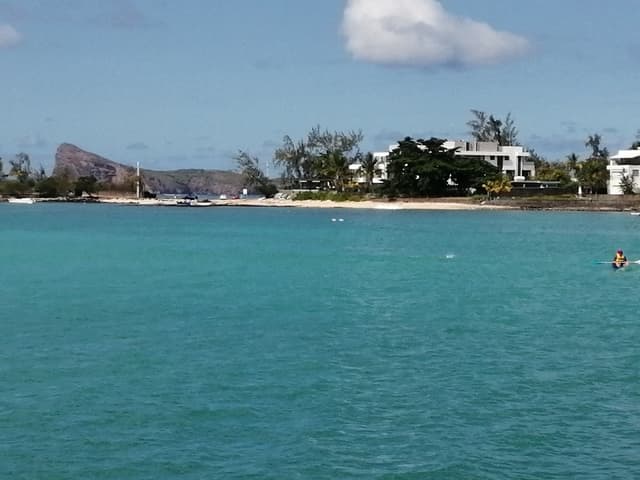
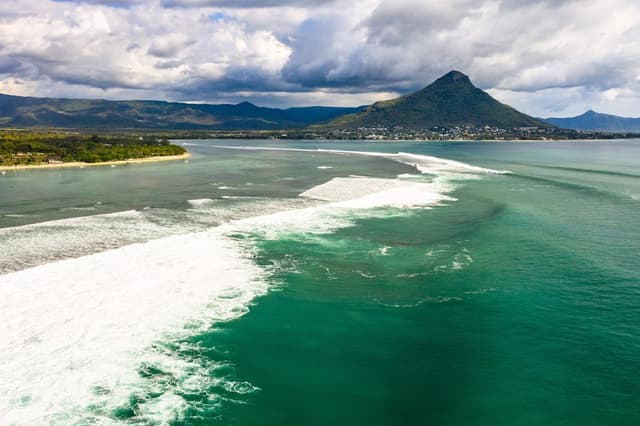
Late-Night Dining:
Although the party scene is more subdued, you can still find late-night food options. Many food stalls near beaches and tourist hotspots stay open into the late hours, offering a range of local snacks and food to enjoy after a night out.
Live Music:
If you're into live performances, many bars and restaurants feature local bands playing sega or jazz, adding a local touch to the night. You can also find themed nights, karaoke, and performances in some of the tourist hotspots. This is a great way to soak in some Mauritian culture while having fun.
Key tips
While you can enjoy a drink in most places, don't expect the nightlife to be as intense as in major cities worldwide. Mauritius is more about relaxed vibes and enjoying the island’s natural beauty.
Public transport to and from nightspots can be a bit tricky after hours, so taxis are commonly used.
The nightlife scene tends to wind down earlier compared to Western cities, with most bars and clubs closing by midnight or 2 AM.
If you're a night owl looking for partying until dawn, you might be better off in areas like Grand Baie or Flic-en-Flac, where there's a bit more energy. But if you're after laid-back evenings with some local flavor, Mauritius won't disappoint.
Clothes to bring
When packing for Mauritius, you'll need to prepare for a tropical climate with a few variations depending on the season. For hot, humid days, lightweight clothing like cotton t-shirts, shorts, and dresses are ideal. However, be mindful that winter (from May to October) can get a bit chilly, especially in the evenings. A light jacket or sweater will be necessary for these cooler nights.
If you're planning outdoor activities like hiking, pack sturdy footwear for comfort and safety. Swimwear is a must for beach days or water activities. Always bring a hat, sunglasses, and sunscreen to protect yourself from the sun.
Also, keep in mind that mosquitoes can be a nuisance, especially at night, so don’t forget to bring mosquito repellent.
Hiking Trails
Mauritius offers some incredible hiking trails for all levels, from beginners to experienced trekkers. Over the years, I've had the privilege of covering most of the island's hiking routes, and I can confidently say that the variety and beauty of the trails are unmatched. Whether you're seeking breathtaking views of waterfalls, rugged mountains, or lush forests, there’s something for everyone.
Most hikes in Mauritius are free to access—about 95% of them! This makes it an excellent destination for budget-conscious travelers. Only a small percentage (around 5%) of trails are on private land, and these may require a small fee or permission to access.
Here are some of the hikes I highly recommend:
Le Morne: A UNESCO World Heritage site, Le Morne offers an iconic hike with stunning coastal views and a rich history. It's a moderate to challenging hike but well worth the effort for the views.
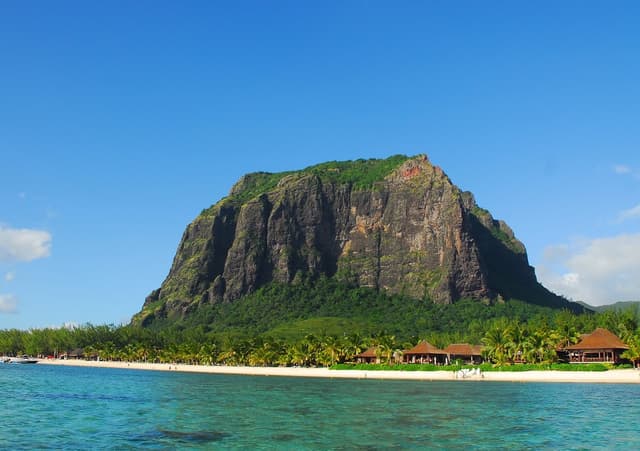
Le Pouce: One of the tallest peaks in Mauritius, Le Pouce is a challenging but rewarding hike that gives you panoramic views of the island. The trail is mostly uphill but not overly difficult.
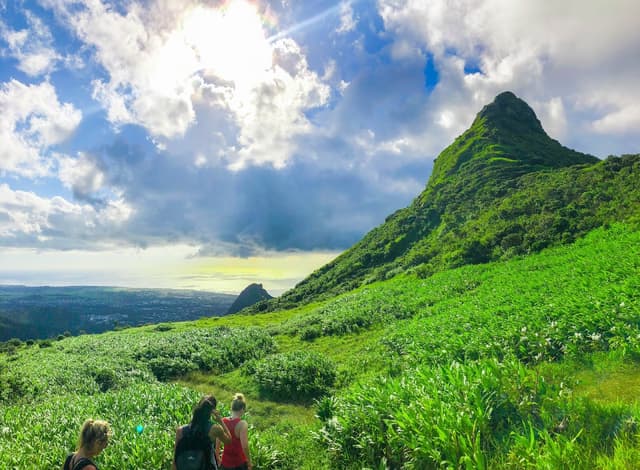
Lion Mountain: For those looking for an adventure, the hike up Lion Mountain is quite a challenge. The reward, however, is a spectacular view of the island’s southern coast.
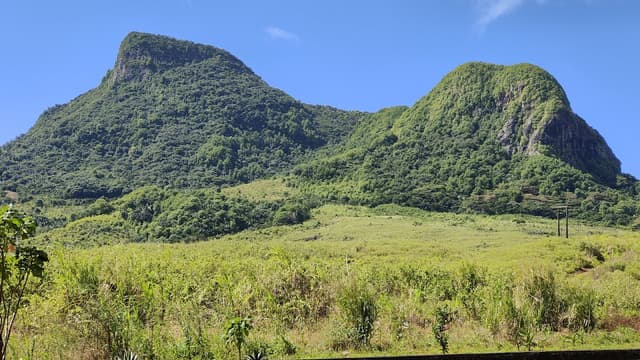
Black River Gorges National Park Trails: This park features a variety of trails, from easy walks to more challenging treks. The lush forest, diverse wildlife, and beautiful waterfalls make it a must-visit for nature lovers.
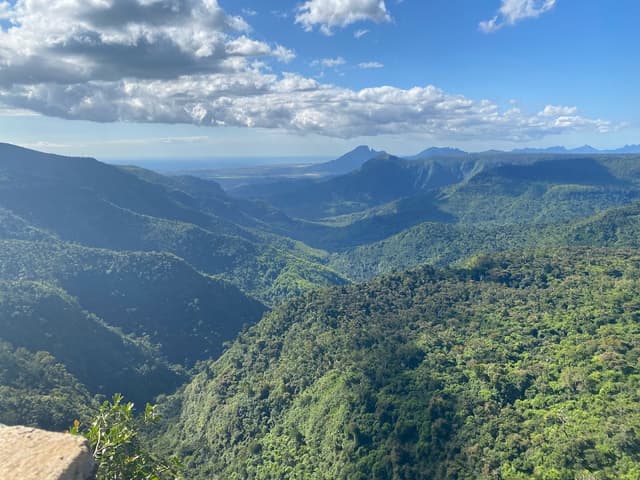
Chat et Souris: A more moderate hike, Chat et Souris offers stunning views of the west coast of Mauritius. It’s relatively short but steep in places, making it an ideal hike for those seeking a bit of a challenge.
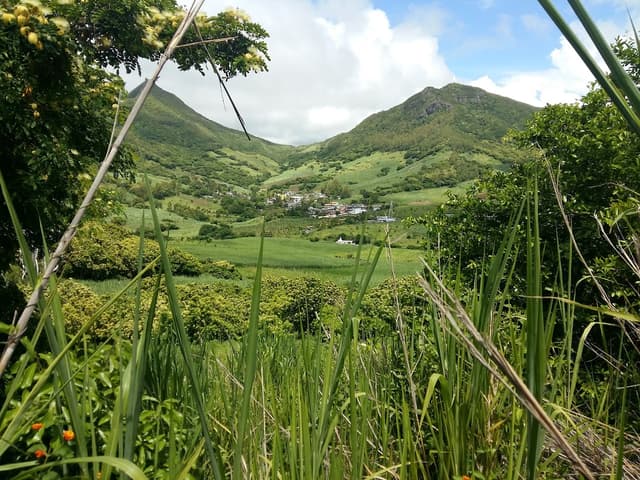
7 Cascades (Seven Waterfalls): One of the most famous hiking routes in Mauritius, this trail leads to a series of seven stunning waterfalls. The hike is a bit tough but incredibly scenic, with lush vegetation and refreshing pools.
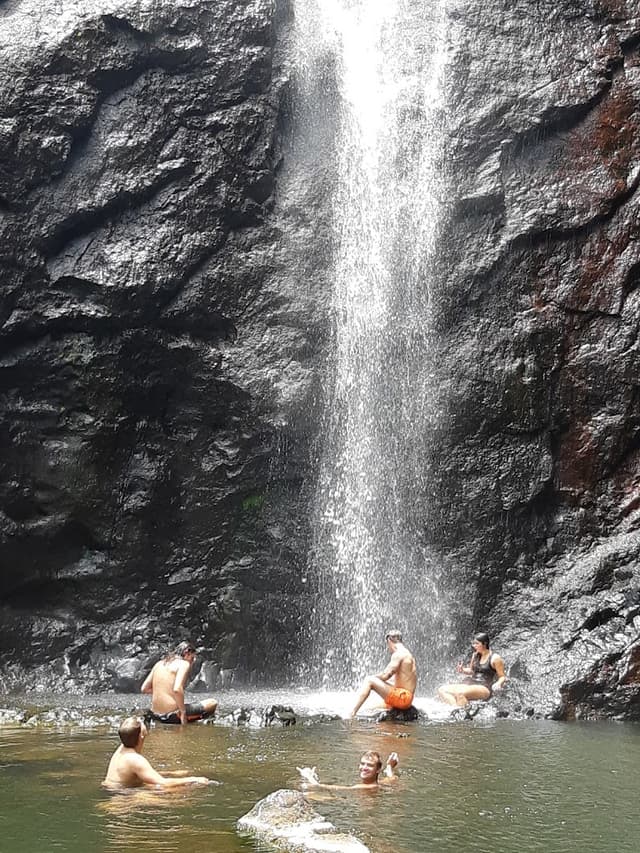
Cascade 500 Pieds: Located in the southwest, this waterfall is one of the tallest in Mauritius. The hike through the forest to reach it is truly rewarding, and you’ll be able to take a swim in the natural pools at the base of the waterfall.
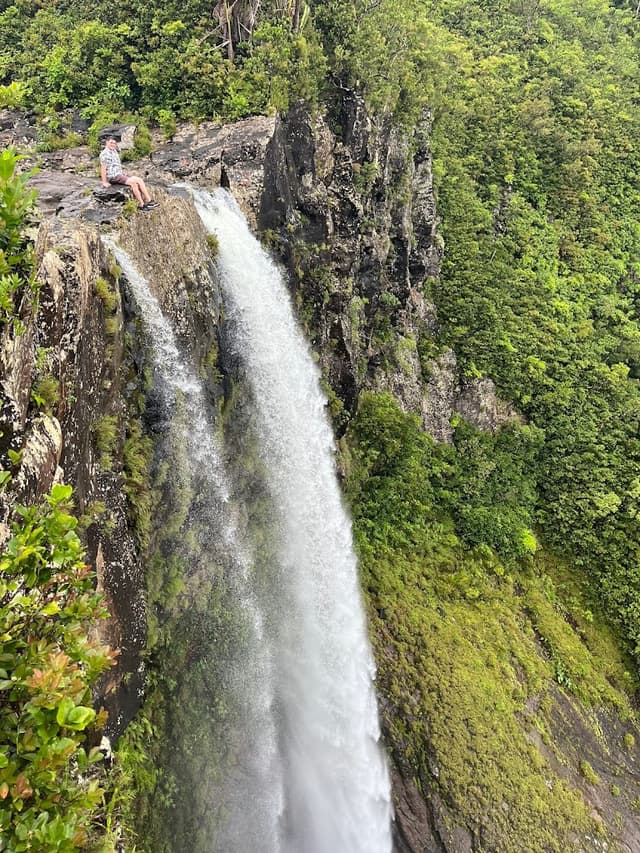
Trekking in the South Coast: The southern coast of Mauritius offers some of the most dramatic landscapes and best hiking routes. Trails here typically offer both mountain and coastal views, with relatively fewer crowds.
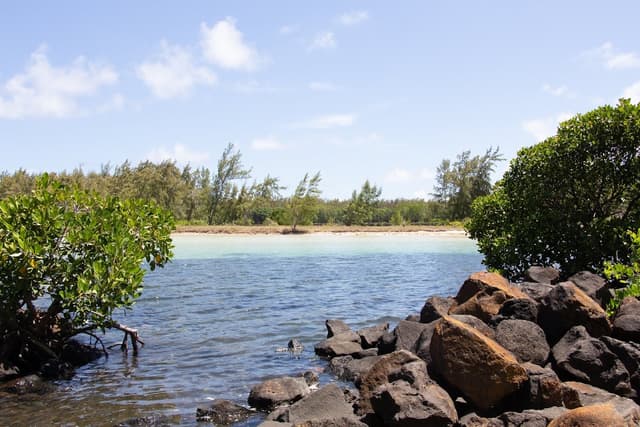
For all these hikes, it’s best to be prepared with proper footwear, water, and sun protection. Some trails can be quite demanding, especially during the hotter months, so be sure to bring sufficient supplies. Most trails are well-marked, but it’s always a good idea to have a local guide for some of the more remote areas, especially in national parks.
Sea Activities
As an experienced diver and kitesurfer, I can confidently say that Mauritius is a true haven for sea activities. The island's crystal-clear waters, vibrant coral reefs, and consistent trade winds make it a top destination for a wide range of water-based adventures. Whether you're looking to explore the underwater world, ride the waves, or simply enjoy the stunning coastal views, there's something for everyone.
Diving
Mauritius is renowned for its exceptional diving spots, particularly in the north and west of the island. The warm, clear waters are home to vibrant coral reefs, colorful marine life, and shipwrecks. Some of the top diving locations include Grand Baie, Trou aux Biches, and Flic en Flac. Diving is generally on the pricier side, with trips typically costing between 50-70 EUR depending on the operator and location. The best time for diving is between October and May, when the water is calm and visibility is optimal.
Kitesurfing
For kitesurfers, Mauritius is a world-class destination. As someone who’s experienced the sport, I can tell you that Le Morne is one of the best kitesurfing spots in the world. Located on the southwestern tip of the island, it offers consistent winds, clear waters, and a perfect mix of flat water and waves. This makes it ideal for both beginners and advanced kitesurfers. You’ll find numerous kitesurfing schools and rental shops, but be prepared for the costs, which can be on the higher side for lessons and rentals.
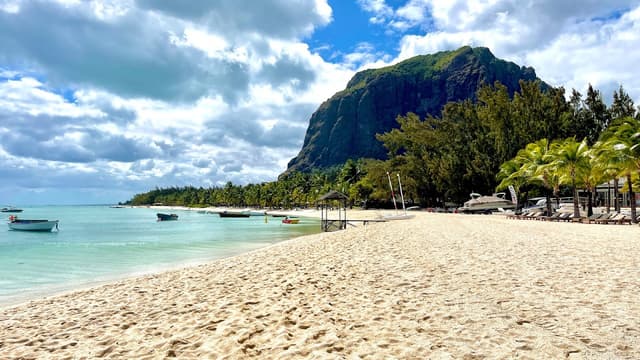
Surfing
Surfing in Mauritius is also a favorite among water sports enthusiasts, especially on the island’s southern coast, where you can find some world-famous breaks like One Eye. The best time to surf is from May to September, when the southern swells are strongest. While it's not as beginner-friendly as other spots, experienced surfers will find some excellent waves here.
Snorkelling
Snorkelling is one of the most accessible and budget-friendly sea activities in Mauritius. You can easily explore the shallow reefs around the island for free, especially at beaches like Blue Bay and Ile aux Cerfs. These areas are teeming with marine life, including tropical fish, sea turtles, and corals. It's the perfect way to experience the underwater world without any extra cost.
Paid Boat Trips and Other Activities
If you're looking for a more laid-back sea experience, you can join a paid boat trip that may include glass-bottom boat rides, dolphin watching, or exploring nearby islands like Ile aux Benitiers. These trips typically cost between 20-50 EUR, depending on the duration and inclusions. Other activities like wakeboarding, water skiing, and even submarine rides are available at higher costs, often requiring booking through specialized operators.
In summary, while activities like snorkelling remain free and easily accessible, more specialized activities such as diving, kitesurfing, and surfing come at a significant cost. Mauritius caters to both beginners and experienced water sports enthusiasts, with a wide range of options to suit all tastes and budgets. So, whether you're looking to dive into the depths of the Indian Ocean, ride the waves, or simply relax on a boat trip, Mauritius offers the perfect setting for every sea adventure.
Cultural Experiences and Sightseeing
Mauritius offers a wide variety of activities beyond the famous water sports and hiking. Here are a few additional activities you can enjoy on the island:
Cultural Experiences and Sightseeing (Free)
Aapravasi Ghat: Visit this historic immigration depot, which tells the story of indentured laborers who arrived in Mauritius during colonial times.
Château de Labourdonnais: A beautiful colonial mansion with gardens, offering a glimpse into the island's history.
Grand Bassin: A sacred lake and pilgrimage site for Mauritian Hindus, Grand Bassin (or Ganga Talao) is located in the mountainous region and is one of the most important religious sites on the island. During Maha Shivaratri, thousands of pilgrims make the journey to the lake to pray and bathe in the waters, honoring Lord Shiva. The surrounding area is filled with impressive statues, including a giant statue of Shiva, offering an unforgettable cultural experience.
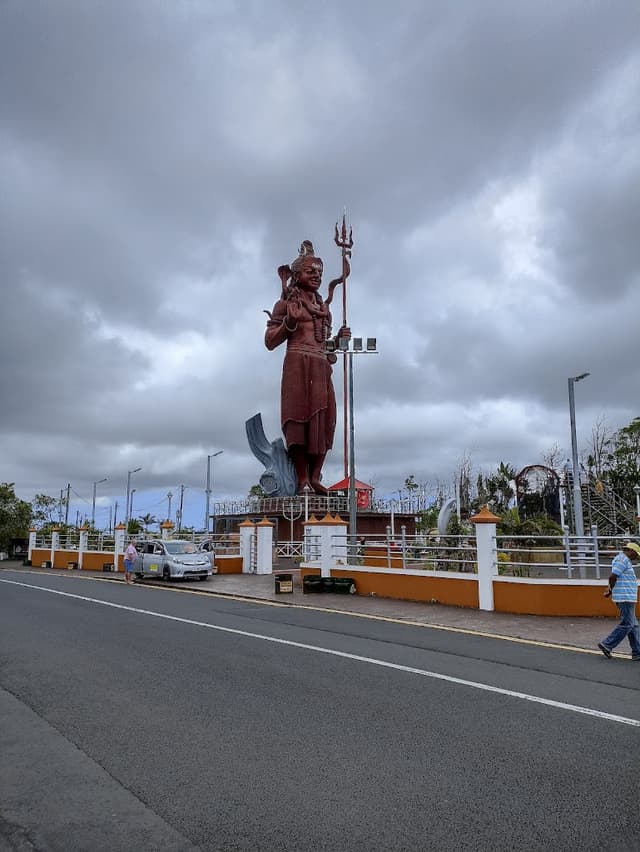
Food Tours (Paid)
Explore the island's diverse cuisine on a food tour. Many tour operators offer guided walks through markets and restaurants to give you a taste of Mauritian food, from street snacks to more formal dining experiences.
Kayaking and Stand-Up Paddleboarding (Paid)
Rent a kayak or a stand-up paddleboard to explore Mauritius' lagoons and crystal-clear waters. Several beaches, such as Grand Baie and Flic en Flac, offer rentals and are excellent for these activities.
Shopping
Port Louis has a range of shopping experiences, from high-end boutiques to local markets like Central Market, where you can buy everything from spices to souvenirs.
Wildlife Tours (Paid)
Visit Île aux Aigrettes Nature Reserve to spot endemic species such as the Mauritius kestrel, or explore Black River Gorges National Park, which boasts rich biodiversity and wildlife.

Visit Botanical Gardens (Paid)
Sir Seewoosagur Ramgoolam Botanical Garden is one of the most famous attractions, home to rare plant species, giant water lilies, and beautiful paths for a peaceful stroll.
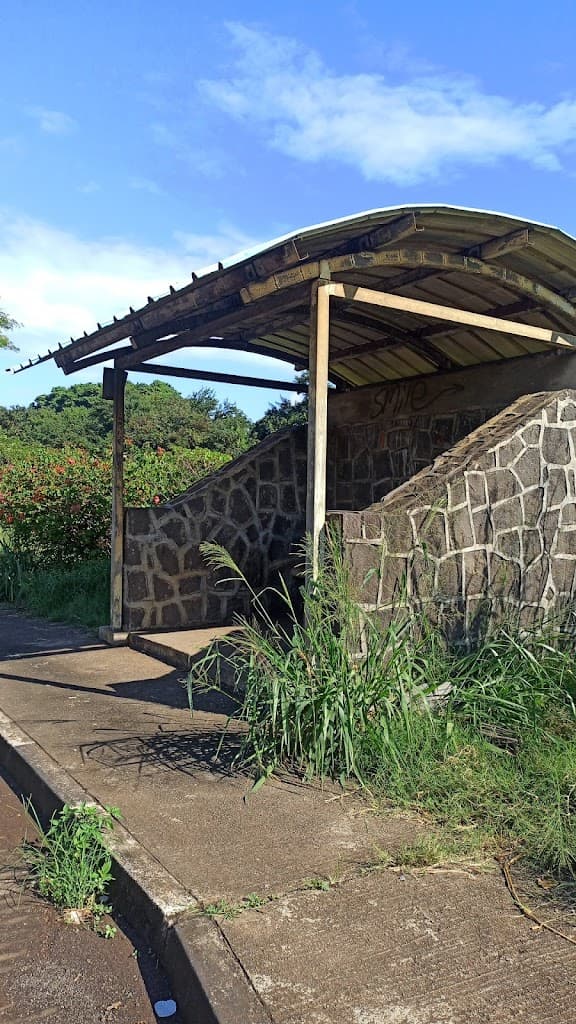
Ziplining (Paid)
For a more adrenaline-filled adventure, try ziplining in places like Casela and Valle des Couleurs Nature Park, where you can soar above lush forests and even see some of the local wildlife.
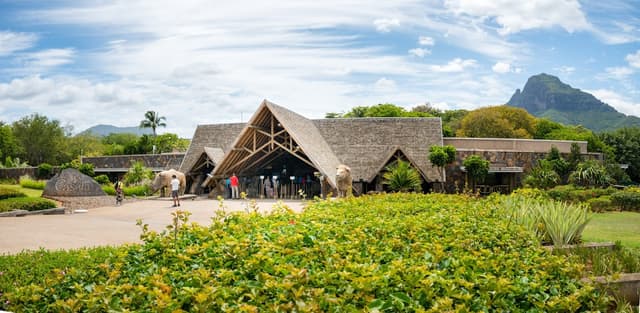
Horseback Riding (Paid)
Explore Mauritius' beautiful landscapes on horseback, with a variety of stables offering tours through sugar plantations, beaches, and even on the mountainsides. Some trails are scenic and beginner-friendly, while others offer more advanced riding experiences.
Quad Biking (Paid)
If you're looking for a thrilling adventure in Mauritius, quad biking is a fantastic option! You can explore the island's rugged terrain, beaches, and lush landscapes in a unique and exciting way. Popular areas for quad biking include the southern parts of the island, especially around Bel Ombre, where you can ride through sugar cane fields, forests, and along coastal tracks. The activity is suitable for beginners and experienced riders alike, with professional guides ensuring your safety and providing a fun experience.
Some tours also combine quad biking with other activities like visits to waterfalls, rivers, or scenic viewpoints, making it a great way to immerse yourself in Mauritius' natural beauty. If you’re an adventure seeker, don’t miss out on this unique way to explore the island!
Tea Factory Visits (Paid)
Visit the Bois Chéri Tea Factory to learn about the island's tea production. Take a tour and taste some freshly brewed local tea while enjoying panoramic views of the island.
Fishing
If you’re into fishing, Mauritius offers excellent opportunities for both deep-sea and lagoon fishing. You can hire boats for a day out on the water to catch tuna, marlin, or other fish species.
Spiritual Retreats and Wellness Spas in Mauritius
Mauritius is more than just a beach destination—it's also an ideal place for spiritual rejuvenation and wellness. The island offers serene locations, perfect for reconnecting with yourself, healing, and finding inner peace.
Spiritual Retreats
Mauritius is home to places like Grand Bassin (Ganga Talao), a sacred lake for Hindus, surrounded by peaceful temples and statues, where you can meditate or simply soak in the spiritual ambiance.
Retreat Centers: There are dedicated centers for yoga, mindfulness, and holistic healing. Many retreats include yoga and meditation sessions, focusing on mental clarity and relaxation.
Wellness Spas
Mauritius is a haven for relaxation and rejuvenation, offering a wide range of wellness spas across the island. These spas cater to diverse budgets, providing services that range from basic massages to full-body treatments in luxurious settings.
Outside the resorts, independent spas are scattered throughout towns and cities, providing a variety of services at competitive prices. These include Ayurvedic treatments, reflexology, and stress-relief massages.
For a cost-effective yet indulgent experience, consider visiting local spas in non-touristic areas, where you can enjoy high-quality treatments at a fraction of the price compared to resort options. Always check reviews online to ensure a satisfying experience.
Ending Note
Mauritius offers an incredible blend of activities, stunning landscapes, and vibrant culture that makes it a dream destination for travelers of all kinds. Whether you’re here for thrilling sea adventures, peaceful nature escapes, or a cultural deep dive, the island has it all. With proper planning and a willingness to explore, you’ll discover why Mauritius is so beloved by visitors and locals alike.
Feel free to contact me for online video consultations or help in preparing your travel plans—I’d be delighted to assist and provide you with a budget estimate tailored to your travel style and preferences. From insider tips to curated recommendations, I’m here to ensure your trip is unforgettable!
Safe travels, and enjoy every magical moment Mauritius has to offer! 🌴
The home for unique & authentic travel



